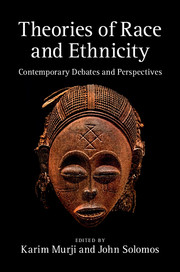Eduardo Bonilla-Silva, “Why Can’t We Just Get Along?: Race Matters in the Colorblind Racial Movement”Posted in Media Archive, Politics/Public Policy, Social Science, United States, Videos on 2015-12-22 23:50Z by Steven |
Center for the Study of Race and Ethnicity in America (CSREA)
Center for the Study of Slavery and Justice
Brown University
2015-02-27 (Published on 2015-07-02)
Presents…
Eduardo Bonilla-Silva, Professor of Sociology
Duke University
“Race Today: A Symposium on Race in America” brought a group of the nation’s most respected intellectuals on race, racial theory and racial inequality together to consider the troubling state of black life in America today. What are the broader structural factors that shape race today? How do these factors work on the ground and institutionally and what are the consequences? What are the ideas about race, and racial identities that enable the normalcy of stark racial differences today? In particular, what role do key ideas such as “colorblindness” and “post race” play in shaping perception and outcomes? What can be done to challenge ideological and structural impediments to a racially egalitarian society?
Eduardo Bonilla-Silva is a Professor of Sociology at Duke University. Bonilla-Silva speaks widely on race and ethnic matters nation wide. He has published four books: White Supremacy and Racism in the Post-Civil Rights Era (co-winner of the 2002 Oliver Cox Award given by the American Sociological Association), Racism Without Racists: Color-Blind Racism and the Persistence of Racial Inequality in the United States (2004 Choice Award; this book is now in a second [fourth] expanded and revised edition that was published in 2006), White Out: The Continuing Significance of Racism (with Ashley Doane), and (with Tukufu Zuberi) White Logic, White Methods: Racism and Social Science.




